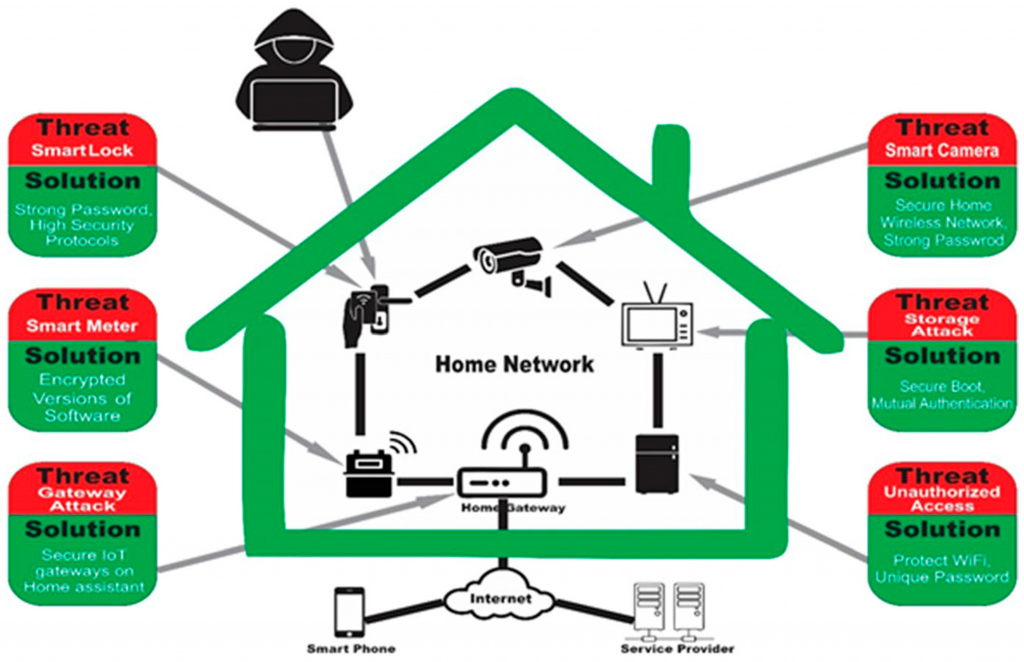
By Jeremy Abram
Most people worry about cybersecurity only when they step outside their home — coffee-shop Wi-Fi, airport hotspots, hotel networks. And that’s fair: public networks are risky. But what if the bigger threat isn’t at Starbucks, but already sitting quietly inside your living room?
Today’s homes are packed with smart TVs, cameras, light bulbs, fridges, voice assistants, thermostats, and more. Each one connects to your Wi-Fi — and each one can act as a digital back door if compromised. In cybersecurity terms, your home network may already be a Trojan horse — looking safe from the outside, but hiding dangerous weaknesses inside.
Let’s break down why your home Wi-Fi may be riskier than you think, and what you can do about it.
1. The Hidden Risk: Smart Devices & IoT Gadgets
Every connected device is a tiny computer — and tiny computers often have tiny security budgets.
Why they’re dangerous:
- Many IoT devices ship with weak default passwords
- Some never receive security updates
- Low-cost gadgets may have poor encryption
- Compromised devices can become part of botnets (armies of hacked devices)
Real-world example:
In 2016, the Mirai malware infected millions of home IoT devices, using them to launch massive internet-wide attacks.
If your smart light bulb gets hacked, it probably won’t start flashing Morse-code or spying on you. But it can be used to:
- Access other devices on your network
- Steal Wi-Fi credentials
- Launch attacks on your laptop or phone
- Help attackers “pivot” deeper into your digital life
2. Network Segmentation: Your Digital Neighborhood Needs Fences
Think of your Wi-Fi like a neighborhood. If every device lives on the same street with no fences, one compromised gadget gives attackers access everywhere.
Best practice: Segmented networks
Break your home Wi-Fi into separate networks:
| Network Type | Devices | Why |
|---|---|---|
| Primary/Home | Laptops, phones, work devices | Keep sensitive data isolated |
| IoT Network | Smart home devices | Quarantine weaker devices |
| Guest Network | Visitors | Prevent others from accessing your devices |
Most modern routers support multiple networks — you just need to turn the feature on.
Pro tip: Name your IoT and guest networks something boring. (“IoT-Net-2G” beats “SmartHome-HQ.”)
3. Guest Networks Aren’t Just for Guests
Guest networks aren’t just polite — they’re defensive security systems.
When a friend’s phone, or your kid’s tablet, connects to your main Wi-Fi, you’re trusting their devices, too. If just one of those is infected with malware, your network becomes a playground for attackers.
Use your guest network for anything not mission-critical — even your TV and smart appliances.
4. Router Firmware: The Most-Forgotten Device in Your House
Your router is the gateway to your entire digital life — yet many users:
- Never update the firmware
- Never change default settings
- Leave admin passwords untouched
Why firmware updates matter:
Firmware fixes:
- Security vulnerabilities
- Wi-Fi stability problems
- Performance bugs
Your router needs updates just like your laptop does — and manufacturers quietly push critical patches that most users ignore.
Checklist:
- ✅ Change the default router login password
- ✅ Enable automatic firmware updates (if offered)
- ✅ Turn off remote administration (unless needed)
- ✅ Disable UPnP if you don’t use smart-home features
5. The Illusion of Safety: Your Network Looks Secure — Until It Isn’t
Attackers today rarely smash the front door — they come through the mailbox slot.
They don’t attack your password — they infect your smart toaster and wait for you to log in.
They don’t break your firewall — they exploit the weakest device in your home.
In short, cybersecurity isn’t about what you trust — it’s about what your network allows.
6. How to Actually Stay Safe at Home
Home Wi-Fi Security Checklist
| Task | Importance | Notes |
|---|---|---|
| Use WPA3 encryption | Essential | WPA2 at minimum |
| Update router firmware | Critical | Enable auto-updates |
| Change router admin password | High | Never leave defaults |
| Create separate IoT network | High | Contain weak devices |
| Use guest network for visitors | High | And for kid devices |
| Disable WPS feature | Medium | Attackers love it |
| Regularly reboot router | Medium | Clears malware memory |
| Monitor devices on network | Medium | Kick out unknown devices |
Conclusion: Your Home Network Isn’t a Fortress — It’s a Village
You wouldn’t trust every stranger to walk through your house just because your front door locks — so don’t trust every gadget simply because it connects to Wi-Fi.
Public Wi-Fi security matters — but home Wi-Fi complacency is the new threat.
Your network could already be a decoy — safe on the outside, compromised inside.
Make your home Wi-Fi smarter than your smart devices.
Leave a Reply